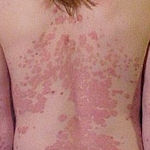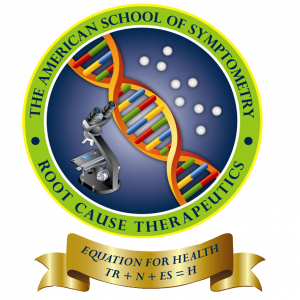
Dr. Maxwell Nartey
Professor of Symptometric Science, American School of Symptometry, NFP
Yeast is a kind of fungus. There are over 100,000 species of fungi, of which, 100 are pathogenic to humans and animals while over 8,000 are pathogenic to plants. Therefore, those who think vegetables are safe to eat raw, should think again.
Fungal spores are airborne. This is why most of them are inhaled. Once they are inhaled, they will head straight to the lungs, the storehouse of oxygen. From the lungs, some of them will fan out to other organs, and cause havoc.
It is totally wrong to assume that yeast infects only the vagina. It also infects the scrotum and the mouth.
Other fungi get into the body by way of moldy bread, moldy cookies, moldy bananas, moldy fruits, etc. Some fungi grow on old paint, fruits, vegetables, old newspapers, and shoe leather. Therefore, by not washing the hands after touching these objects, and by juicing contaminated fruits or vegetables, a person can easily contract yeast infection.
In the vagina, the yeast called Candida albicans will destroy the walls of the vagina. This allows Gardnerella vaginosis, the bacterium that causes bacterial vaginosis to infect the vagina and cause severe vaginal discharge, and sometimes, fishy odor.
The discharge could be milky, yellowish, green, or clear.
Itching of the labia minora or majora is common with yeast infection. This is because Candida albicans feeds on the oil, salt, sugar residues, sulfur or phosphorus in the vaginal walls. Then, it also feeds on the coal tar derivatives that are circulating in blood.
For example, FD&C Yellow#6 generally called Monoazo, is a common coal tar derivative found in sodas (carbonated beverages), bakery products, candy, gelatin desserts and dry drink powders. It is also in douches and in hair rinses. It dries the hair follicles and the scalp extremely fast, thereby causing itchy scalp. In other parts of the body, it will cause itchy labia majora or minora, itchy back, itchy ears, itchy eyes, itchy anus, itchy skin, etc.
Another coal tar derivative is FD&C Yellow#5 generally called Tartrazine. It is in all breakfast cereals, bakery products like cookies, breads, cakes, jellies, bottled soft drinks, ice cream, gelatin desserts, spaghetti, candy and puddings. It is also in bath salts, hair-waving fluids, and in the coloring of hair rinses. Finally, it is in over 60% of the over-the-counter pharmaceutical drugs like pain relievers, antihistamines, decongestants, and anti-inflammatory drugs.
After feeding on these resources, Candida would eliminate its wastes. Gardnerella will also eliminate its wastes. It is their combined wastes that will destroy the vaginal walls to cause a discharge. Therefore, it is not normal for a woman to have frequent discharge or repulsive discharge.
The cell wall of Candida is primarily made of a substance called chitin. Chitin makes it extremely difficult to destroy Candida unless its growth factors are being constantly eliminated. How can their growth factors be removed? Antibiotics are a complete joke. They rather make Candida reinforce chitin. Douches drive Candida deep into the dermis and hypodermis, or they scatter them across the entire body. Probiotics just slow down their rate of reproduction.
Thrush (scattered whitish fungal clusters) is caused by Candida albicans that relocated to the mouth especially the tongue and the throat.
The good news is, the oxygen in the oil of citronellol, makes it extremely difficult for Candida to produce chitin. Since without chitin, Candida cannot eliminate waste, it will not reproduce. This is how Symptometry’s ionization, oxidation and hydrolysis kill Candida.
To prevent Candida from reinfecting the person, Symptometry recommends citronellol for vaginal rinse twice a day while staying away from moldy items like wine, cookies, bread, pastries, etc., and coal tar derivatives. Moldy items are the products of yeast, and this yeast is called Saccharomyces cerevisiae.
Saccharomyces cerevisiae can easily infect a two-day old cake, cookie, bread, etc. which has been exposed, or it can infect wine which has been exposed. Many wine drinkers are not aware that yeast is used to produce wine. Now, they know. The name of this yeast is Saccharomyces cerevisiae.
Can yeast infection be cured? Of course, it can be cured. Much depends on the person who has it, and does not want to be reinfected.
What else must be known about Saccharomyces? It is an airborne creature, and as an airborne creature, it quickly recognizes its old habitat like bread, and cannot wait to live in it again. This is why any food or beverage that was produced with yeast, and is consumed, creates an instant habitat for Saccharomyces.
The bad news is, Candida and Saccharomyces are not the only fungi that infect a person. Pilobolus, Cryptococcus, Rhizopus, and Aspergillus flavus are the other fungi that make humans miserable. They infect chocolate because theobromine and casein (phosphoprotein) are their favorite growth factors. Casein is also in yogurt, milk and ice cream.
Countless women have Candida and other fungi because they keep feeding these fungi their growth factors. Why should they leave and go elsewhere and suffer when they are being housed, protected and fed extremely well by their host?
Also, there is another group of fungi that cause chronic fungal infections. They are called dermatophytes, and their infection is called mycosis. Dermatophytes live in dust, and when the wind or a strong wind triggered by a tornado stirs dust, and it blows dust across a wide area, the individuals who inhale this contaminated dust may suffer from systemic mycoses.
Systemic mycoses are fungal infections that occur deep inside the body. They make a cough chronic. Also, they make emphysema, cystic fibrosis, asthma, bronchitis, sleep apnea, shortness of breath, and other respiratory illnesses chronic. These fungi keep joining pneumocystis carinii to cause lung collapse or respiratory failure. They have been the silent killers of humans for thousands of years.
Considering the above, what is left to eat and drink? Extraordinarily little. Fungi have reclaimed their land. They own the world whether we like it or not. Therefore, if we want to live healthily and happily on this planet, we must comply with their rule.
What is their rule? Their rule is simple to follow. Know what they infect, and if you consume what they have infected, ionize, hydrolyze or oxidize them, and keep the vagina and the skin in their correct acid/alkaline balance. This is not asking too much. At least, thanks to Symptometry, humans now have a choice, and a better choice for that matter. Either be infected and suffer or be infected and know what to do. Plants and animals have no choice. They just die as a prey or of fungal diseases.
It is because Symptometry has a far better understanding of yeast infection, and it has the tools to cure it that it should be contacted without further delay for root-cause treatment.
© Copyright 2021, The American School of Symptometry, NFP. No part of this publication may be reproduced or transmitted in any form or by any means, electronic or mechanical, including photocopying, recording, or by any information storage and retrieval system without the written permission of The American School of Symptometry, NFP. Library of Congress copyright number Txu 1-621-370, Washington D.C.


 Next Post
Next Post